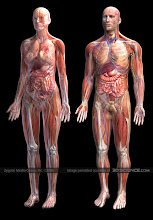
The 1960s are seen as the era of sexual exploration and the start to the change in our society’s attitudes towards sexual behavior. After the Kinsey reports, sexuality was something more people began to explore, women especially were not afraid to go outside the norm. The results of the Kinsey report showed that homosexuality, extramarital sex,and other previously “forbidden” sexual acts were more commonly practiced. These new ideas caused a sexual liberation and many were no longer living by “society standards.”
Birth control became a popular and the idea and fear of pre-marital childbirth eased. Women began exploring their bodies and desires. The pill was seen as a symbol of the Sexual revolution. Feminist movements combined with important Literature such as Betty Freidan’s Feminine Mystique helped change people concepts of the Woman’s role in relation to sex. In the Feminine Mystique Friedan addresses the issue of the domestic role of women in 1960's America and the feeling trapped feeling that goes along with it. Freidan believed that Women should not have to conform to the society ideas of a perfect housewife and should have and enjoy sex. Freidan’s book offered new insights into the idea of the domestic and sexual role of Women. (1)
Even in these moving times Homosexuality was seen as something horrible and corrupt. The men and women who were gay were seen as a threat to society, doctors even thought it was a mental illness. By establishing the homosexual community as mental, they were suppressed from being able to make social demands. The Florida Legislative Committee between 1956-1965 fought against the teachers in these schools. They sought to fire and rid of each homosexual teacher as a possible threat to the future of America. (2) By 1966 there were 15 gay organizations, and the gay liberation had begun; even though society did already not accept and understand homosexuality, the homosexual community still fought for their rights.
The stonewall riots are the main mark for the start of gay liberation and public awareness for gay liberation. These riots were a series of riots that took place against police in the city of New York City in Greenwich Village during the early hours of June 28th, 1969. The stonewall Inn was a popular bar that catered to the transgender community, gays, and drag queens. Police riots on gay bars were routine during this era, and after the stonewall riots these riots turned into a series of protests and riots for the few weeks following. For the weeks to come, many formed gay rights groups that worked towards establishing rights for the gay community. After the Stonewall riots, gays and lesbians in New York City face many challenges to becoming a respected group. Within six months, two gay activist organizations were formed in New York, and with the years to come groups formed throughout the nation that promoted gay activism. On June 28, 1970, the first Gay pride Marches took place in Los Angeles and New York in honor of the anniversary of the riots. (3)
1.Betty Friedan, Feminine Mystique,(Penguin Books 1963)pg. 91-105.
2.Stacy Braukman, ‘“Nothing Else Matters but Sex”: Cold War Narratives of Deviance and the Search for Lesbian Teachers in Florida, 1959-1963’, Feminist Studies 27(3), 2001, pp. 553-575,
3.Edsall, Nicholas (2003). Toward Stonewall: Homosexuality and Society in the Modern Western World, University of Virginia Press

No comments:
Post a Comment